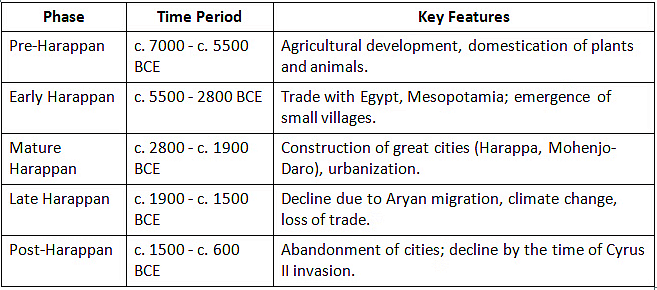Cheat Sheet: Indus Valley Civilisation | History for UPSC CSE PDF Download
Introduction
The Indus Valley Civilization, also known as the Harappan Civilization, stands as one of the earliest urban cultures on the Indian subcontinent. Spanning from approximately 3300 BCE to 1300 BCE, it was a highly advanced society marked by its well-organized cities, technological innovations, and extensive trade networks. In this revision document, we will explore the key phases, discoveries, and theories associated with the Indus Valley Civilization.
Discovery & Early Excavation
Chronology of Indus Valley Civilization

Cities of the Indus Valley Civilization

Society and Political System
 Water supply and drainage system of the IVC period
Water supply and drainage system of the IVC period

Craft, Technology, and Artefacts
Art and Religion


Trade and External Contacts

The End of Indus Valley Civilization

Conclusion
The Indus Valley Civilization, with its remarkable achievements in technology, urban planning, and trade, remains a subject of fascination and scholarly exploration. While theories regarding its decline vary, the legacy of this ancient civilization endures through its impact on subsequent cultures and the valuable insights gained from ongoing archaeological excavations. The Indus Valley Civilization stands as a testament to human ingenuity and the complexities of societal development in antiquity.
|
111 videos|474 docs|173 tests
|
FAQs on Cheat Sheet: Indus Valley Civilisation - History for UPSC CSE
| 1. What is the significance of the Indus Valley Civilisation in Indian history? |  |
| 2. How did the Indus Valley Civilisation decline? |  |
| 3. What were the major cities of the Indus Valley Civilisation? |  |
| 4. How was trade conducted during the Indus Valley Civilisation? |  |
| 5. What is the current state of archaeological research on the Indus Valley Civilisation? |  |

|
Explore Courses for UPSC exam
|

|


















